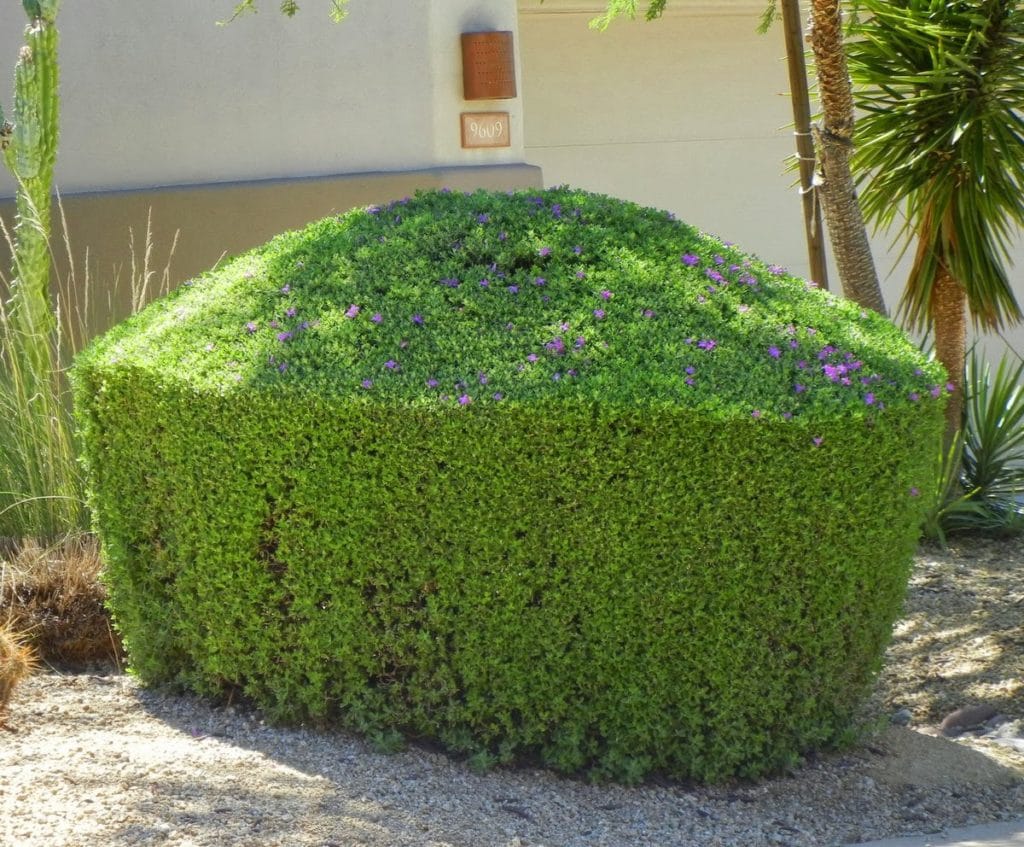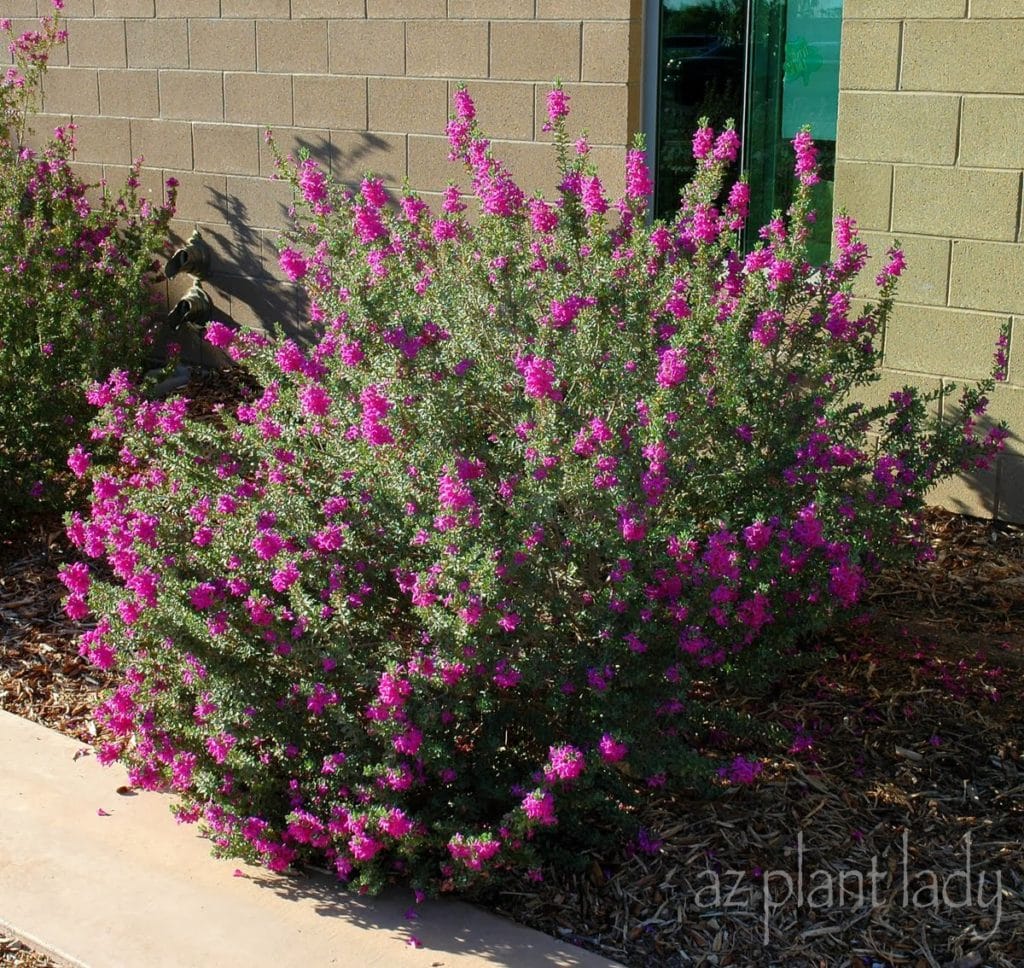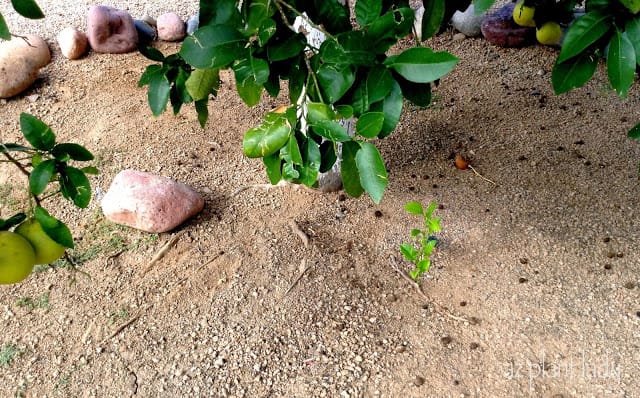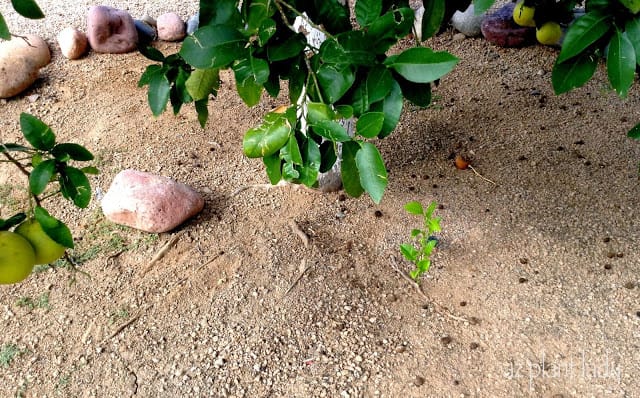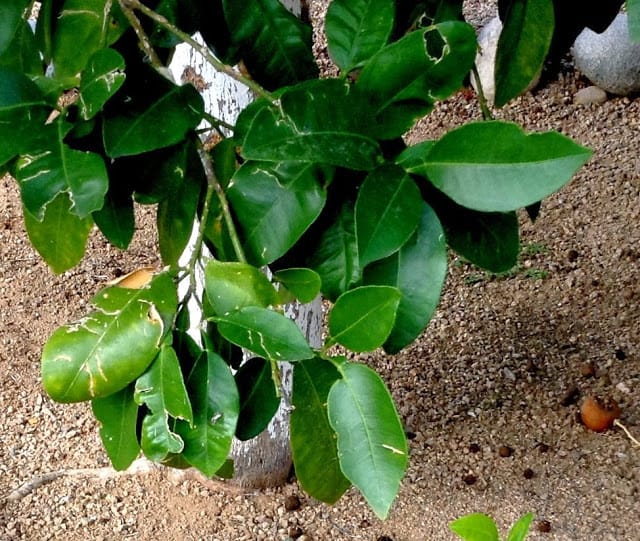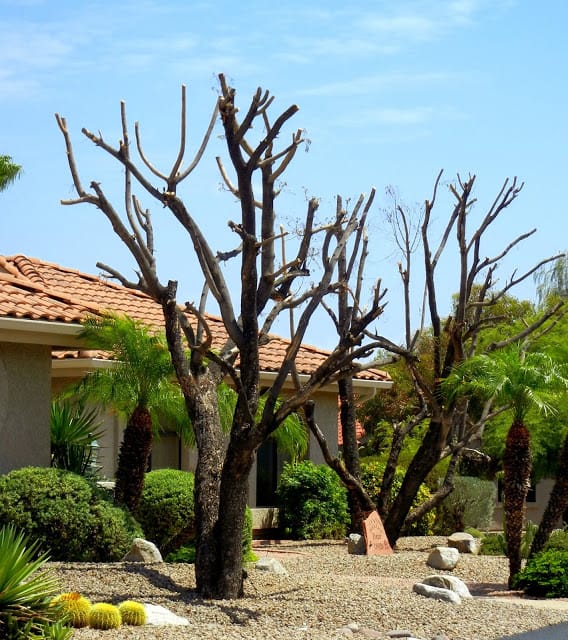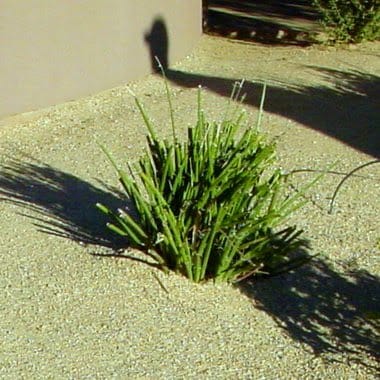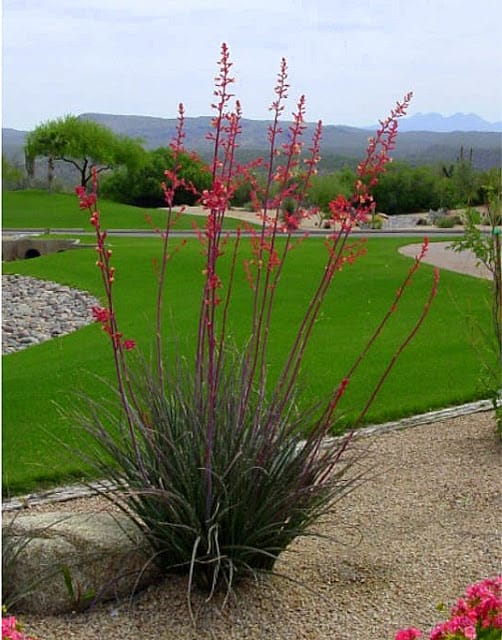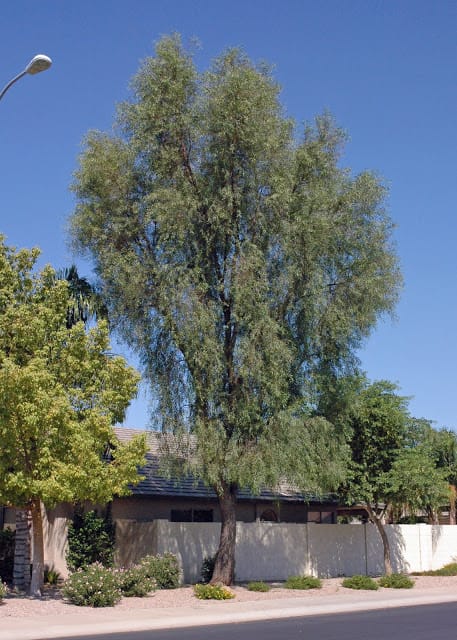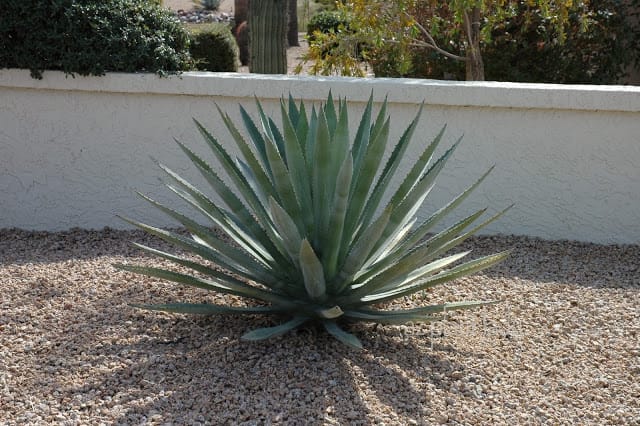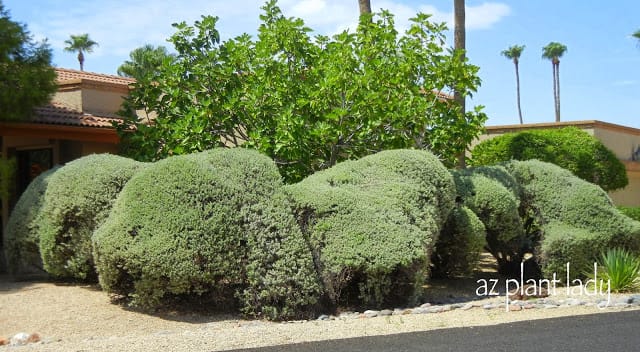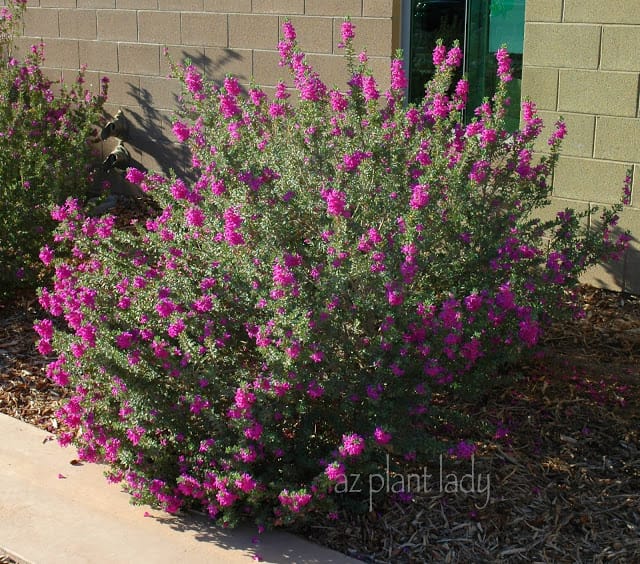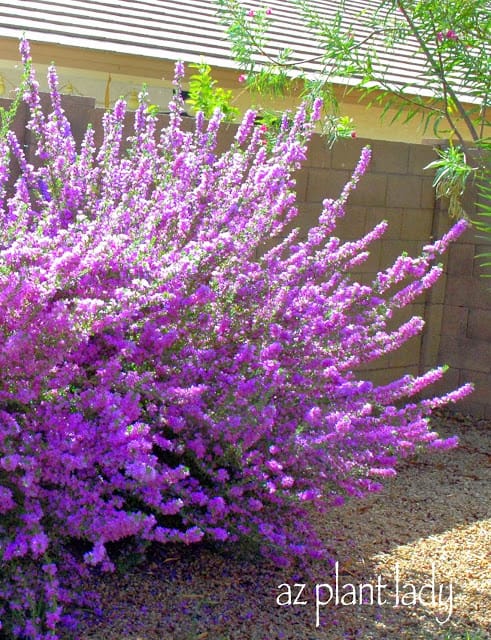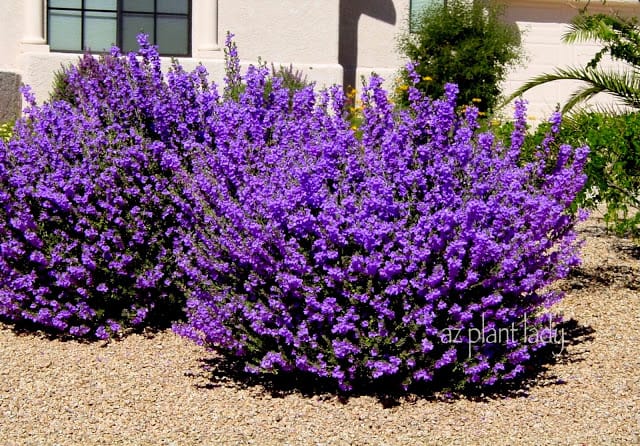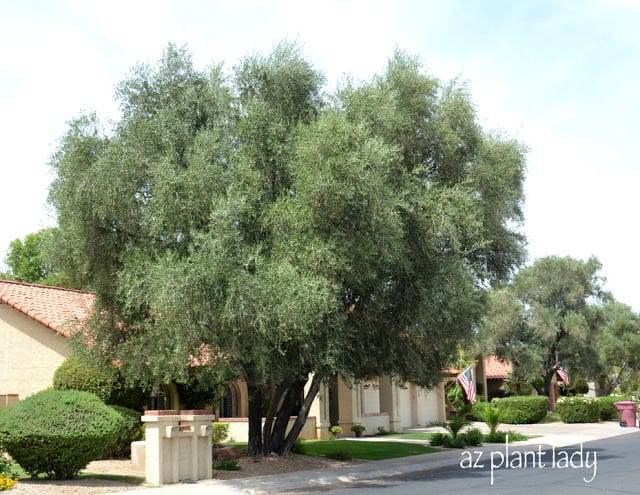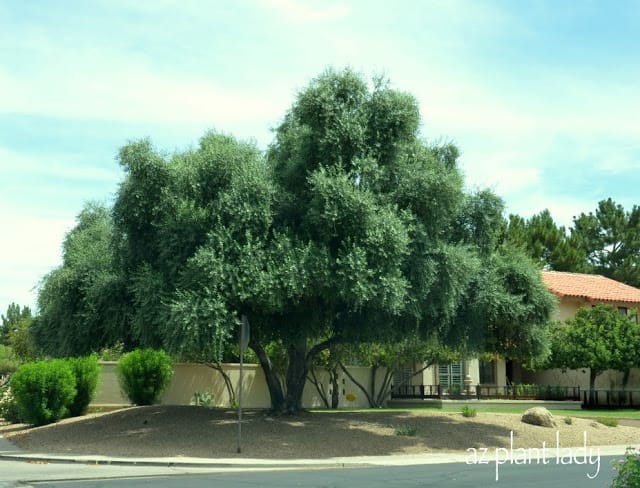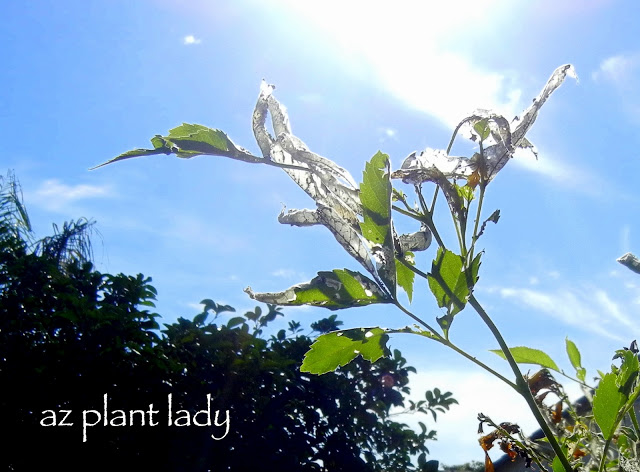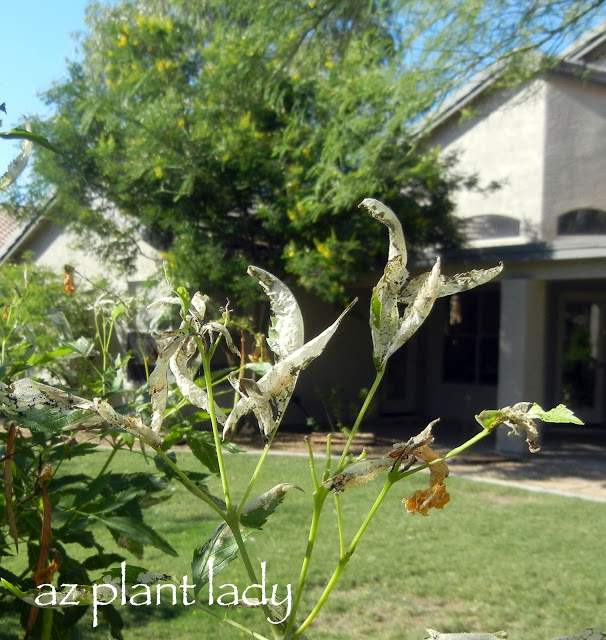
Last week, I was visiting one of my favorite clients when I noticed that one of her citrus trees was showing signs of sunburn, which led to me explaining to her that even citrus trees need sunscreen to prevent sunburn in many cases.
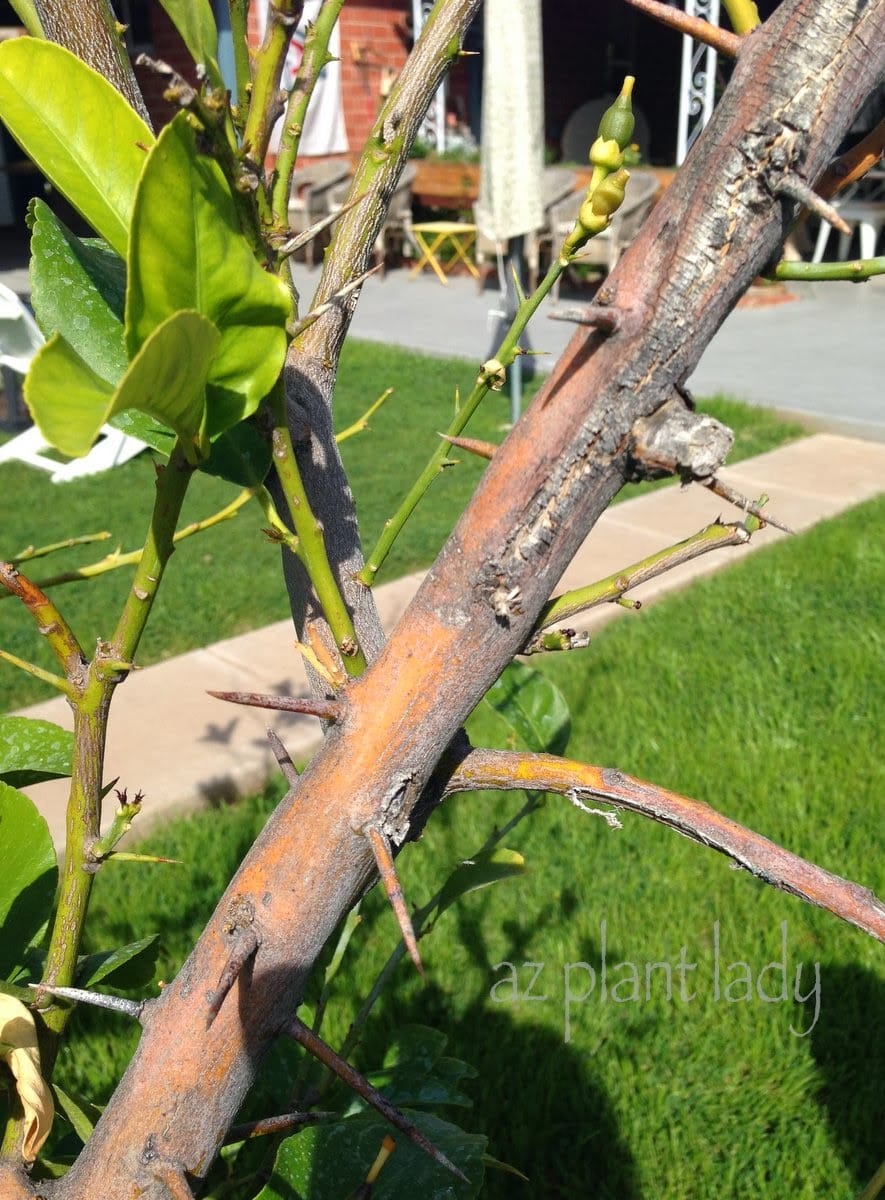
Recognizing Sunburn Symptoms
You can see the lighter-colored bark and some cracks as well along the branch. It turns out that citrus trees are very susceptible to sunburn.
Why Sunburned Citrus Trees Are a Concern
So, why is a sunburned citrus tree something to be worried about?
Well, when a tree becomes sunburned, it often forms cracks in the bark and within these cracks, damaging insects or fungus can find a nice home. Frost damage can also cause cracks in the bark.
In recent years, I have had to deliver bad news to people whose citrus trees became infected with sooty canker, which is a fungal disease that affects the branches and trunks, which takes root underneath the cracked, flaky bark.
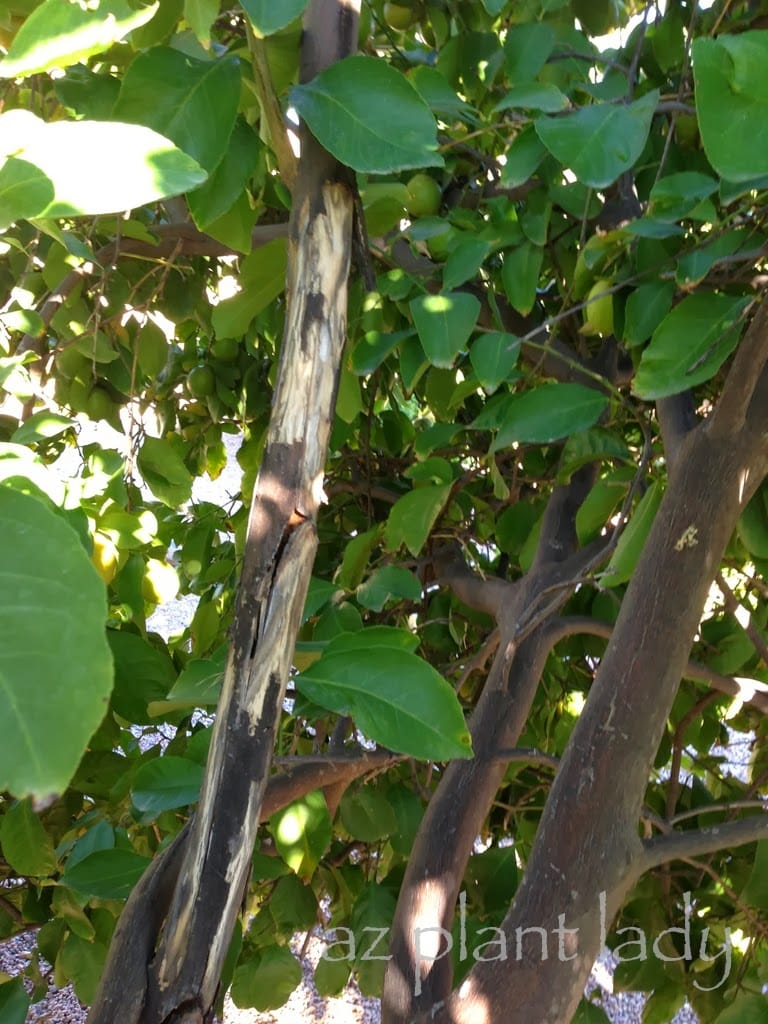
Managing and Protecting Your Citrus Trees
Several times, I have had to tell homeowners that their much-loved citrus tree was badly infected with sooty canker and had to be removed. You can read more about the signs and treatment of sooty canker, here. Citrus can have many types of concerns. Sunburn is a concern as well, but you can protect your trees.
Preventing Sunburn; Citrus Trees Need Sunscreen
Thankfully, there are things we can do to reduce or eliminate the chance of sunburn to our citrus trees. Citrus trees need sunscreen.
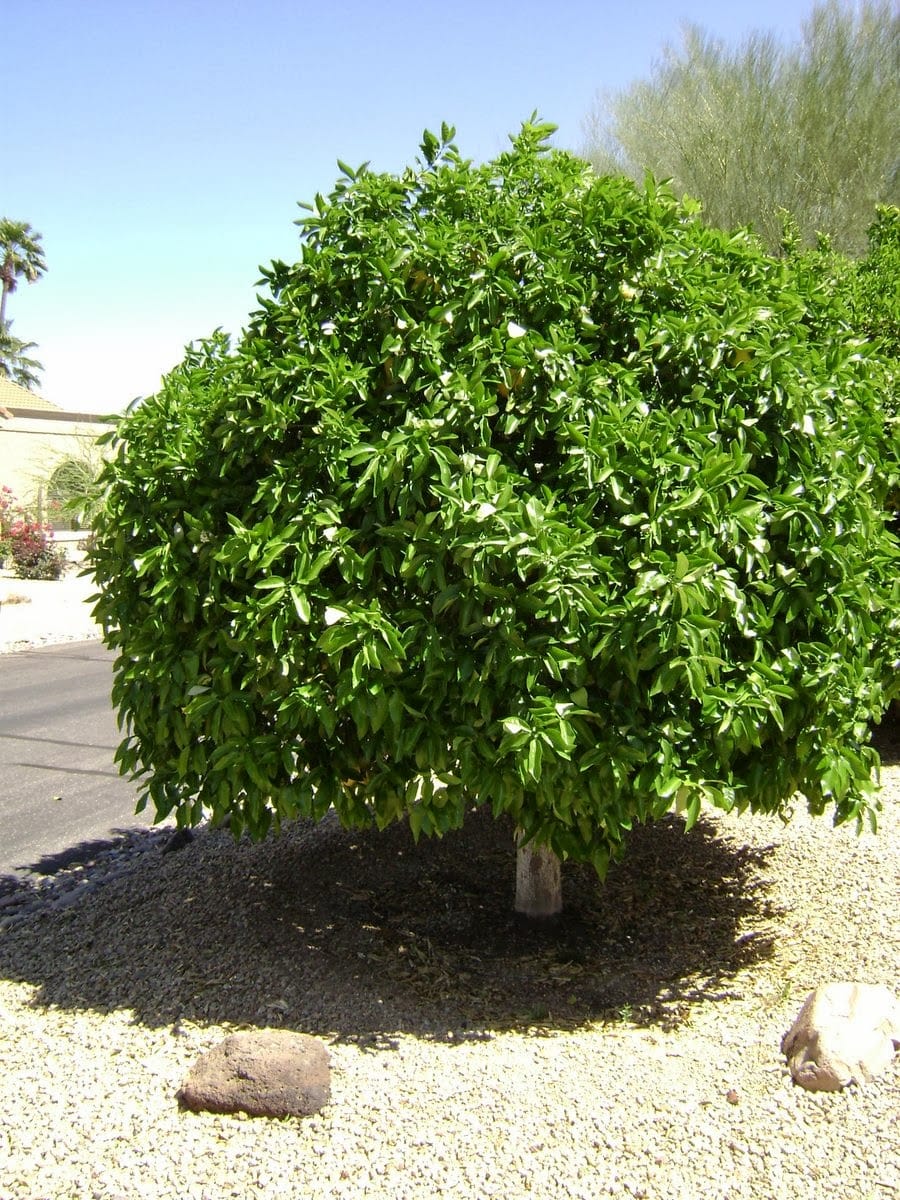
1. Encourage Lower Branch Growth
Allow citrus trees to grow their lower branches. They will help to shade the trunk. A bonus for citrus trees grown this way is that the most fruit is produced on the lower branches that also tastes sweeter.
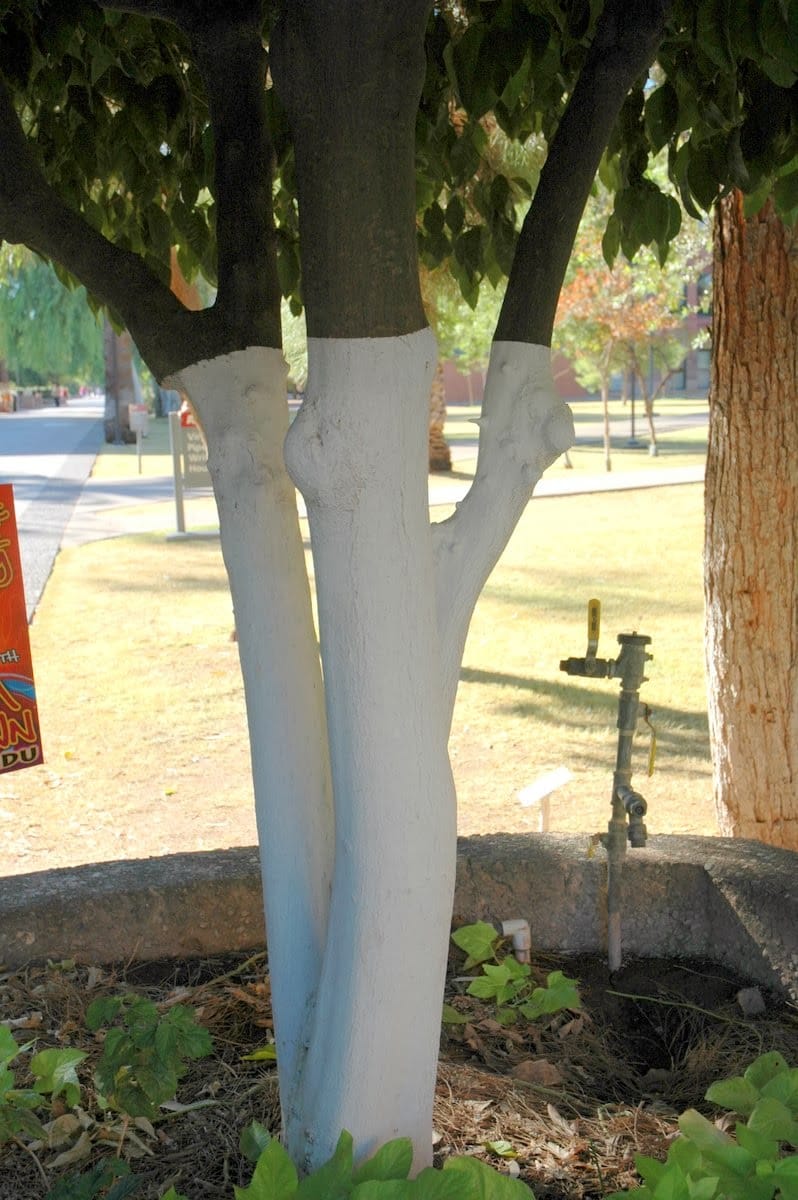
2. Use Protective Measures
Protect exposed trunks and branches by using citrus paint (available at your local nursery) or by simply mixing white latex paint water so that the resulting mixture is 1/2 paint and 1/2 water. You can also purchase tree wraps made from burlap, which can also help to protect them. Avoid using oil-based paint.
However, if you allow the lower branches of your citrus tree to grow and the trunk is shaded, than you don’t have to paint them.

3. Prune Wisely
Don’t over-prune your citrus trees. The photo above, is an EXTREME example of what not to do.
Citrus trees should be pruned in March, and concentrated on removing dead, diseased or crossing branches. Avoid pruning more then 20% of its foliage in any given year. Remember, that the leaves make food for the tree, which will in turn, produce delicious fruit. If pruning leaves you with exposed branches, then coat them with citrus paint.
**See how to protect citrus from the damaging effects of a heat wave – here.
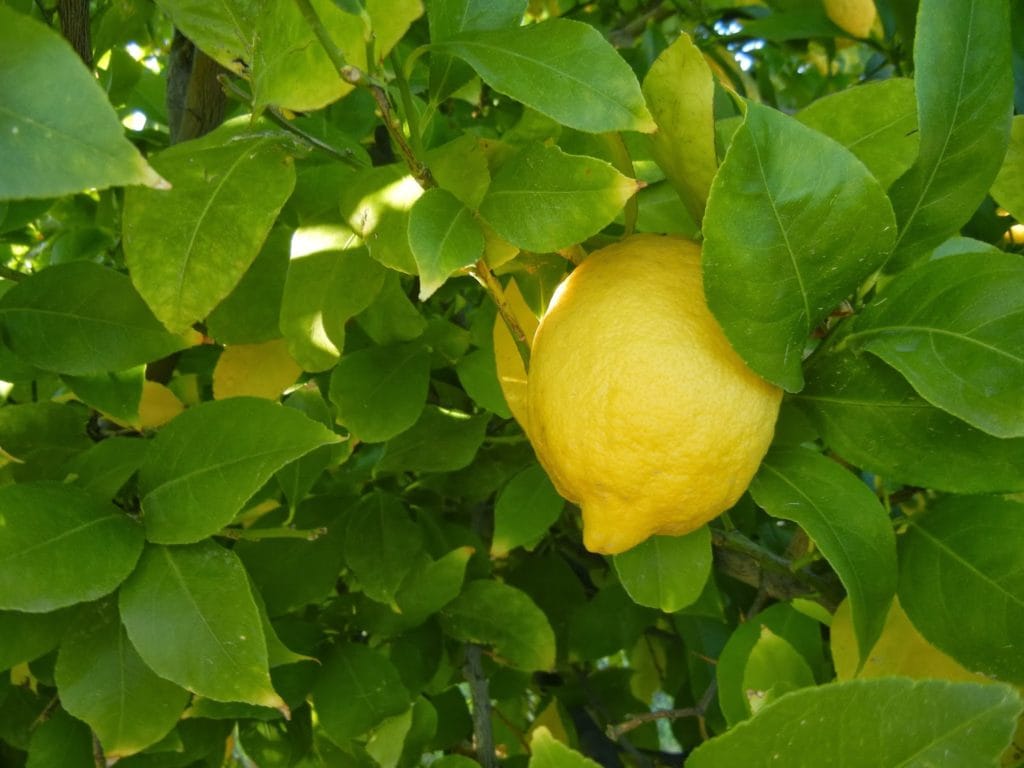
A little note about sun exposure: I always wear sunscreen whenever I venture outdoors. Years spent in California at the beach as a teenager, trying to tan my fair skin did not work. Now, I try very hard to protect my skin from the desert sun. I do however, often forget to wear my hat as it does mess up my hair 😉


